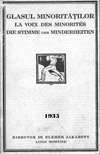
Glasul Minorităţilor. La Voix des Minorités. Die Stimme der Minderheiten. 1935-10+11
please find in the » Introduction.pdf « a complete Table of Content for all annual issues of 1935
More...We kindly inform you that, as long as the subject affiliation of our 300.000+ articles is in progress, you might get unsufficient or no results on your third level or second level search. In this case, please broaden your search criteria.

please find in the » Introduction.pdf « a complete Table of Content for all annual issues of 1935
More...
please find in the » Introduction.pdf « a complete Table of Content for all annual issues of 1935
More...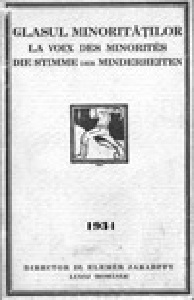
please find in the » Introduction.pdf « a complete Table of Content for all annual issues of 1934
More...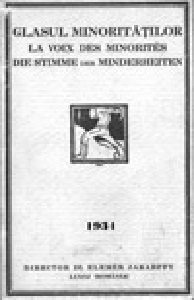
please find in the » Introduction.pdf « a complete Table of Content for all annual issues of 1934
More...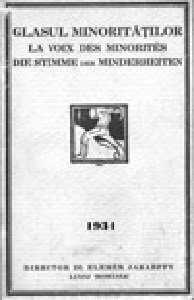
please find in the » Introduction.pdf « a complete Table of Content for all annual issues of 1934
More...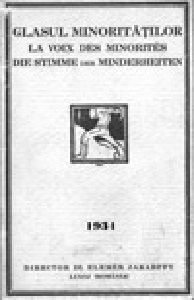
please find in the » Introduction.pdf « a complete Table of Content for all annual issues of 1934
More...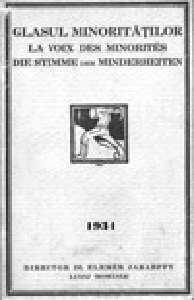
please find in the » Introduction.pdf « a complete Table of Content for all annual issues of 1934
More...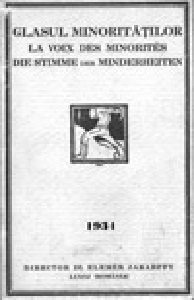
please find in the » Introduction.pdf « a complete Table of Content for all annual issues of 1934
More...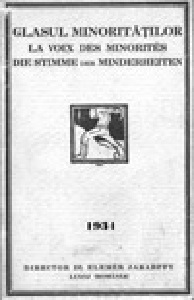
please find in the » Introduction.pdf « a complete Table of Content for all annual issues of 1934
More...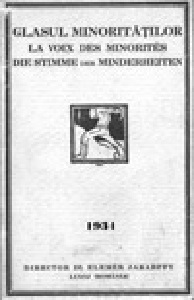
please find in the » Introduction.pdf « a complete Table of Content for all annual issues of 1934
More...
In the 5th secondary class, memoir readings are required, in connection with the special study of this literary species. In Romanian literature, there are few such productions. Among them, the most attractive are Gh. Sion's. This writer is distinguished by a special storytelling talent. His volume "Suvenire contemporane" deserves all our attention. From it we reproduce here the chapter "Emancipation of the Gypsies", an interesting story and a successful characterization, at the same time, of Romanian society in the first half of the XlXth century.
More...
PUBLISHED IN SEPTEMBER 2002 BY THE CENTER FOR APPLIED POLICY RESEARCH at MUNICH UNIVERSITY. Adopting an Agenda for Southeastern enlargement would signify the progressive and balanced shift of the position of the international community and the local leadership: from stabilisation to enlargement; from international micro-management of the region to macro-management with greater local responsibilities; and from an international institutional proliferation to an integral institutional framework. The development of a flexible and informal common roof under which all current strategic objectives, actors and initiatives would be re-arranged to create dynamic synergies would be the acknowledgement of this paradigm shift. The above strategic complementarity and institutional congruence of the Southeastern enlargement process has to be consolidated in the next 2-3 years with the 2004/2005 Eastern enlargement as a deadline. // In conclusion, what may have worked reasonably well in Eastern enlargement process requires additional endeavours in the case of Southeastern enlargement due to the qualitatively and quantitatively different challenges this region poses. A consistent Agenda for Southeastern Enlargement after 2004, including the establishment of an Informal Consultation Council to provide the much-needed strategic and institutional coherence and orientation under EU leadership as well as an enhanced Stabilisation and Association Process will be needed soon, in order to secure a credible Balkan trajectory to Europe.
More...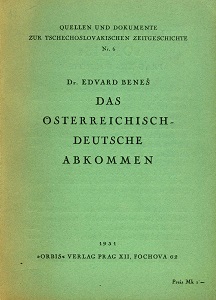
When Edvard Beneš, in 1931, was in office as Minister of Foreign Affairs of Czechoslovakia, he presented this Exposé to the Commissions of Foreign Affairs in both the House of Deputees and in the Senat. It has summarized his ideas about a solution of the Crises of European National Economies. The text has been published in 1931 by ORBIS-Publishing in Prague as issue 6 in the series "Sources and Documents on Contemporary Czechoslovak Hiostory"-
More...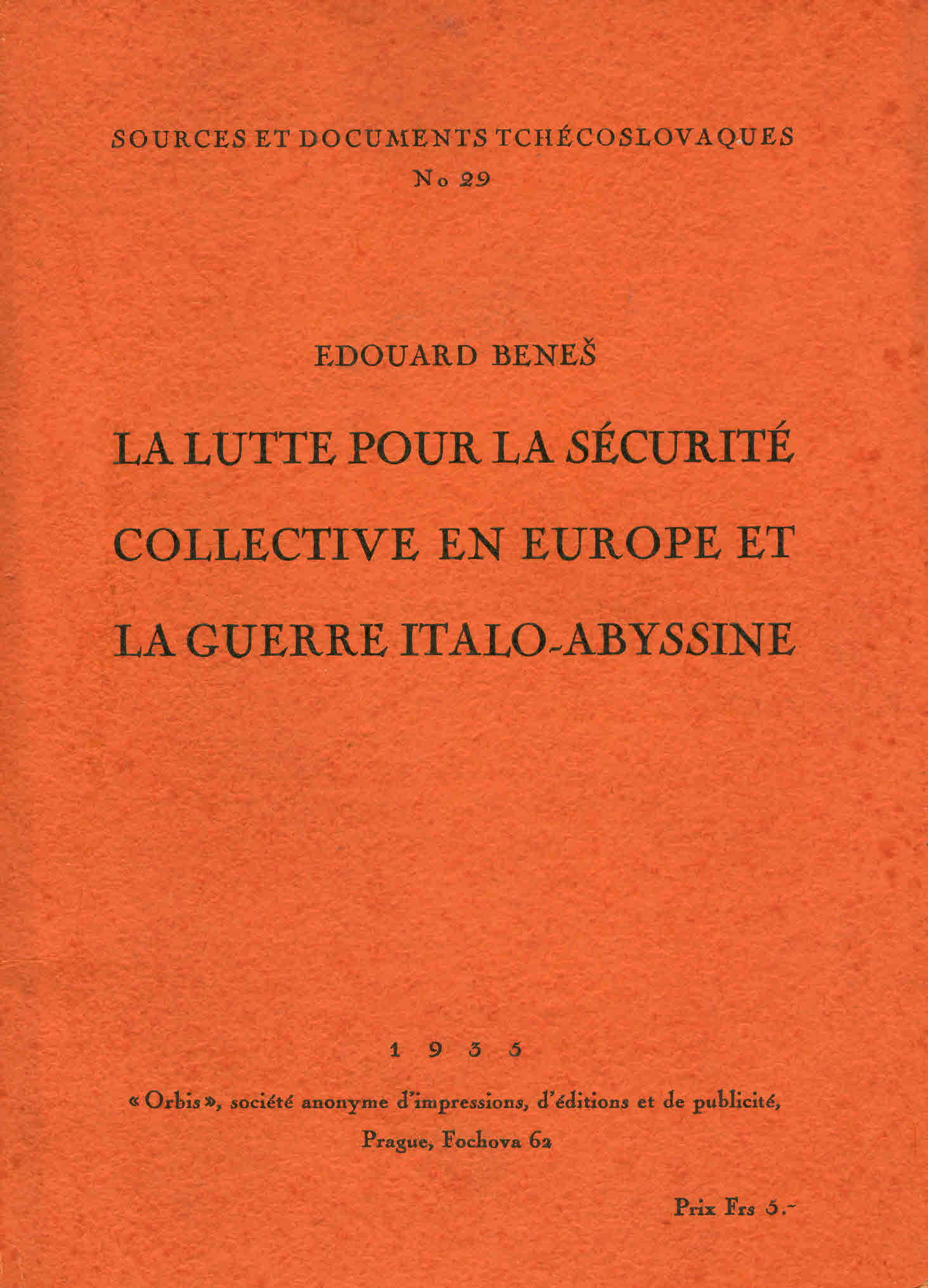
When Edvard Beneš, in 1933, was still in office as Czechoslovak Minister for Foreign Affairs, he delivered this Exposé on European Collective Security to the house of Parliament in Prague as well as tot he Senat. The text was then published by ORBIS-Publisher in Pragie as issue Nr.29 in ist series „Czechoslovak Sources and Documents“
More...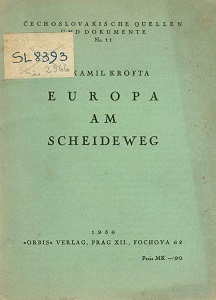
When the Czech historian Kamil Krofta, in 1936, was in office as Czechoslovak Minister for Foreign Affairs, he delivered this political exposé on the Future of Europe to the Commissions for Foreign Affairs in both the House of Parliament and the Senate in Prague. The text was then published by ORBIS-Publisher in Prague as issue Nr.11 in its series „Czechoslovak Sources and Documents“
More...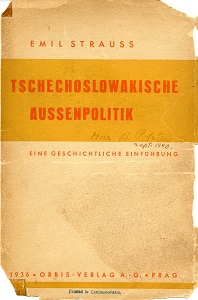
This is a political essay written by Emil Strauss, born 1889 as son of a German-speaking Jewish family in Prague. He was active in politicsin early 20th century in the Czechoslovak / European Social-Demcratic environment. He workes as editor and journalist. He was killed in 1941 in Dachau.
More...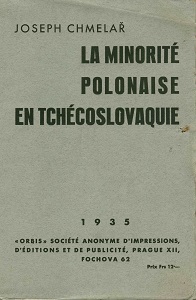
This is an essay by Joseph Chmelař , published by ORBIS-Publisher in Prague and dedicated to the region near Ostrava, where the masin part of the Polish minority was living. Masaryk's principles regarding minority inegration and rights in Post-WW-I Czechoslovakia ,et with some obstacles in this special region.
More...
Inb the Post-WW-I and, hence, the Post-Habsburg period the question of ethnic and/or national minorities became one of the main political problems - in nearly each European State, on the Eruopean scale in general and as well in the debates of the League of Nations. This is a contribution of the Czechoslovak exppert on this topic.
More...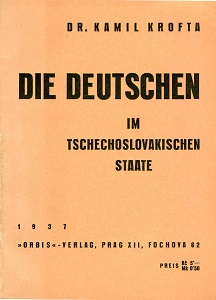
When the Czech historian Kamil Krofta published this essay in 1937, he was still in office as Czechoslovak Minister for Foreign Affairs.
More...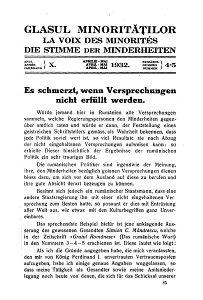
please find in the » Introduction.pdf « a detailed Table of Content for this issue
More...